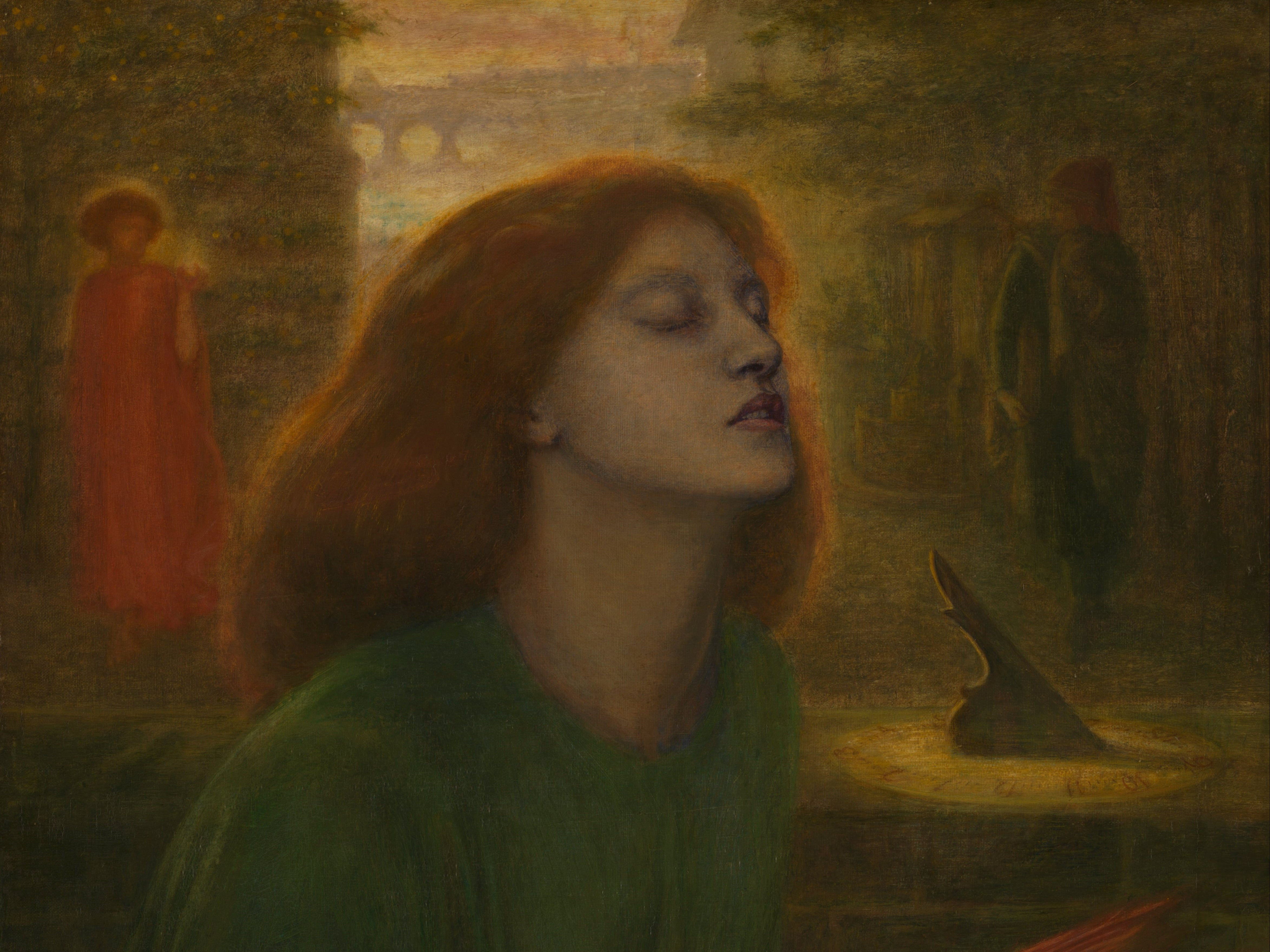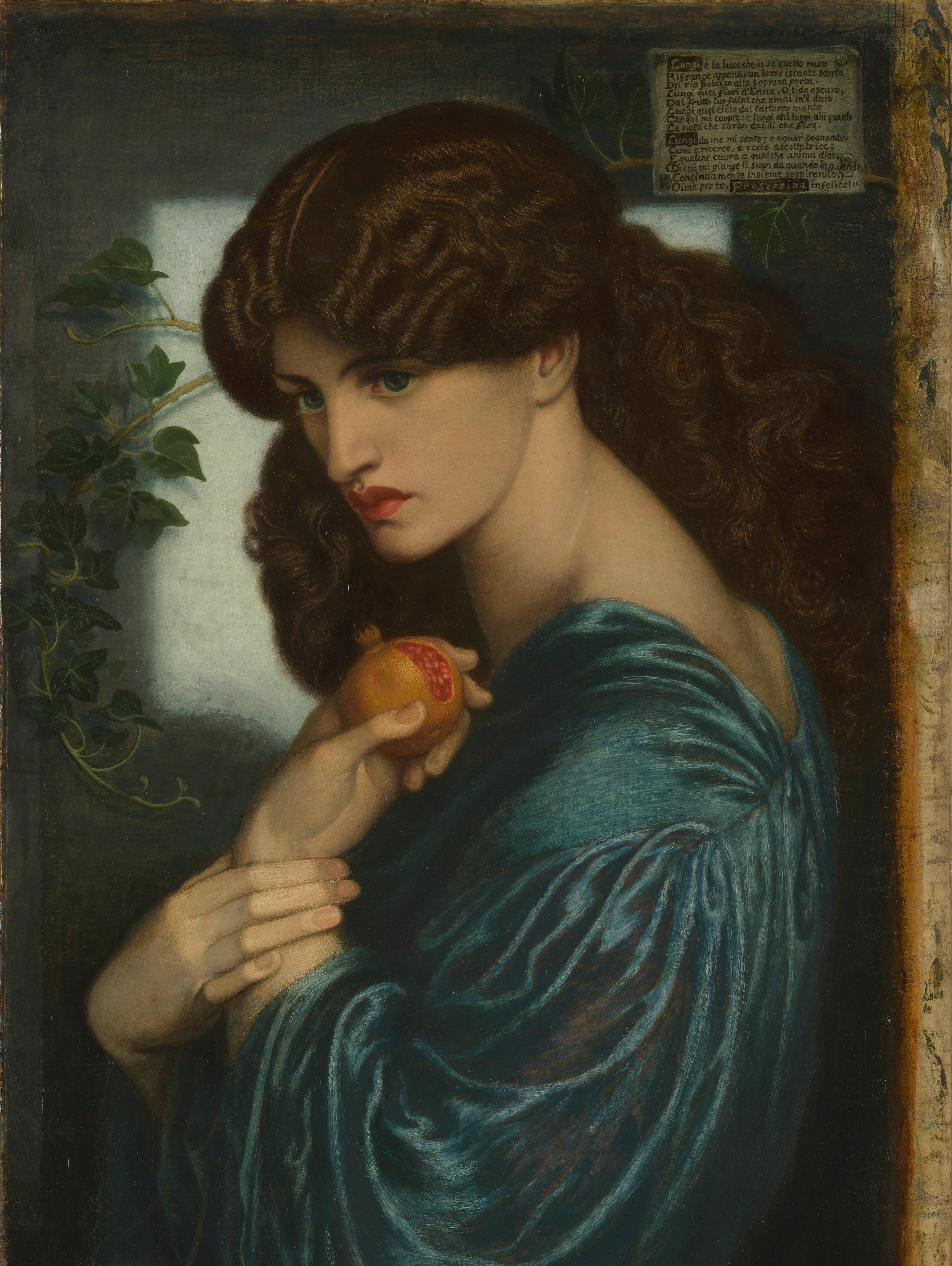The Rossettis, Tate Britain review: Art, sex and death, Pre-Raphaelite style
This blockbuster show about the famous artist-poet family is suitably obsessed with death but gradually consumed by the life of Dante Gabriel Rossetti

The Pre-Raphaelites don’t go away. Those hyper-religious, medievally fixated Victorian death-obsessives may seem perennial candidates for the dustbin of history, but iconic Pre-Raph works such as Dante Gabriel Rossetti’s Beata Beatrix and John Everett Millais’s Ophelia are regularly listed among the nation’s best-loved paintings. And with a little help from curators and museum directors, this beardie band of artist brothers regularly reinvent themselves in ways that make them appear relevant to the moment.
Tate Britain’s latest Pre-Raphaelite blockbuster focuses on the illustrious Rossetti family, which produced the movement’s de facto leader Dante Gabriel Rossetti and the celebrated poet Christina Rossetti. It’s out to rescue this talented brother and sister and their younger siblings, fellow poets Michael and Maria Rossetti, from Victorian fustiness, claiming them as pioneers of “modern beauty”, who “experimented with new forms of living”.
But the big media story ahead of the show has been Elizabeth “Lizzie” Siddal, Gabriel’s wife and principal muse who wasn’t, it seems, just the poster girl of Pre-Raphaelitism – as the model for both Beata Beatrix and Ophelia – but a significant artist who fed her better-known husband some of his pivotal ideas.
If the appeal of Christina’s poetry might seem difficult to get across in an exhibition, directional speakers allow us to hear the poems that made her a household name in Victorian England beautifully read as we move around the first room. A Christmas Carol was set to music as the ever-popular In the Bleak Midwinter, while the deliciously sinister Goblin Market is recast here as an “allegory of feminist salvation”. The fact that Christina was “emotionally troubled” comes as no surprise given the strictures on women in Victorian England. Her lifestyle “experimentation” seems to have been a matter of lifelong celibacy, while her brother’s involved sleeping with many of his friends’ wives.
Yet there’s a touching sense of the Rossettis, children of Italian political exiles brought up in the West End of London, raiding the dressing-up box to model in their brother’s paintings. Christina appears as a gaunt and pensive Mary, with brother Michael as the Angel Gabriel in The Annunciation (1848-50), painted when DG was just 20, a student in revolt against the art establishment. The painting’s simplicity and austerity must have been a revelation in the face of the prevailing academic bombast.
Gabriel’s skill as a draughtsman is evident in large numbers of drawings including punchy ink sketches of French street life that aren’t what you’d expect of the Pre-Raphaelite leader. Most of these images, though, are precisely that: densely worked images of men in tights illustrating Dante’s Inferno, which his father had translated into English, and from whom he took his professional name. This brings home one of the strangest things about Pre-Raphaelite art and the Victorian world in general: that at a time of huge technological advances, there seemed no way of conceiving modernity that didn’t involve looking backward.
While the show constantly reiterates the movement’s preoccupation with the “modern”, theirs was a retro-revolution harking back to the purity and truth they perceived in early Renaissance art.
When Rossetti’s fellow Pre-Raph William Holman-Hunt wanted to create a revolutionary painting in 1848, he didn’t choose a scene from one of the real-life revolutions then exploding all over Europe, but from a romantic novel set in medieval Italy. In Rienzi Vowing to Obtain Justice, the 20-year-old Gabriel can be seen raising his fist as Rienzi, swearing vengeance for the brother murdered by a rival family, with Hampstead Heath standing in for the Tuscan Hills in the background. As Pre-Raphaelite paintings go, this is a great one with its brilliant colour and youthful fervour.
Rossetti’s own Found (1854) is, however, a shockingly bad one, showing a provincial farmer rescuing his former sweetheart from “the streets of London” – and we all know what that means. The scene was inspired by real-life incidents near Rossetti’s studio in Blackfriars, then a notorious “red light” area. Yet his attempt to capture a real-life modern subject feels even more risibly dated than his retro-flavoured religious paintings.
The exhibition studiously avoids the gossipy aspects of its subject, such as the details of Gabriel’s relationship with Siddal, while trying to keep all the Rossetti siblings in the frame throughout. Yet Maria and Michael barely figure, and it’s difficult to make even Christina feel present in what rapidly establishes itself as a Dante Gabriel Rossetti exhibition with only occasional incursions from other artists.
The most notable of these is Siddal, the “working-class” girl who became the most obsessively regarded of his models, though they only married 10 years into their relationship. We’re given a sense of the pair working in close proximity in his studio, and occasionally collaborating, as in the quirky watercolour Sir Galahad and the Holy Grail (1855-7). If Siddal’s drawings and paintings lack Rossetti’s polish, they’re also less mannered, more natural. Her brown ink sketch Last Farewell before the Crucifixion has a gutsy expressive energy that his efforts rarely approach. The minute and mysterious gouache The Haunted Wood is far more compelling than Gabriel’s Mary Nazarene, displayed beside it, in which Siddal herself appears, looking too self-consciously “Pre-Raphaelite” to be taken seriously.
But let’s not get carried away. Siddal’s was a minute talent that had hardly started to develop before she died of a laudanum overdose aged 32, shortly after miscarrying her first child.

Beata Beatrix (1864-70), the painting DG created in response, may have shown Siddal not as herself but as Beatrice, unrequited love of the medieval poet Dante, yet given Gabriel’s identification with his near-namesake the two things were clearly barely separable in his mind. It shows Siddal, eyes closed, lips parted, wreathed in golden light, in a state of near orgasmic transfiguration. You can hardly hope for a more powerful embodiment of the Victorian conflation of sex and death. Some may find it creepy, even kitsch, but it’s Rossetti’s finest moment. From here it’s downhill all the way.
Having abandoned pure Pre-Raphaelitism with its implicit Christian morality, Rossetti – an atheist – threw in his lot with the Aesthetic Movement and its philosophy of “art for art’s sake” and pure visual pleasure. If that suggests a Matisse-like feel for shape, pattern and colour, think again. Rossetti’s fantasy portraits of mythical and biblical heroines offer a sort of generalised, illustrative soft porn. The effect of seeing his favourite model of the time, dressmaker Alexa Wilding, with her big jaw and flaming red hair in endless variations on a theme – playing an instrument, combing the tresses, staring into a mirror – becomes not just deadening, but strangely deathly.
Then there are the figures in the mad industrial-Renaissance mash-up of the Leyland Triptych – Proserpine, The Blessed Damozel and Mnemosyne (1874-81). All three are modelled by William Morris’s wife Jane, who appears uncannily reminiscent of Siddal, and each has an eerie, embalmed quality. But then death was ever present in the Victorian world. Rossetti himself died just a year after completing the final painting, aged 53.
I’ve never much liked Tate Britain’s airless basement galleries, but their tomb-like ambience makes the perfect setting for this evocative and sometimes very poignant exploration of Victorian art, sex and death.
The Rossettis runs at Tate Britain from 6 April until 24 September






Join our commenting forum
Join thought-provoking conversations, follow other Independent readers and see their replies
Comments